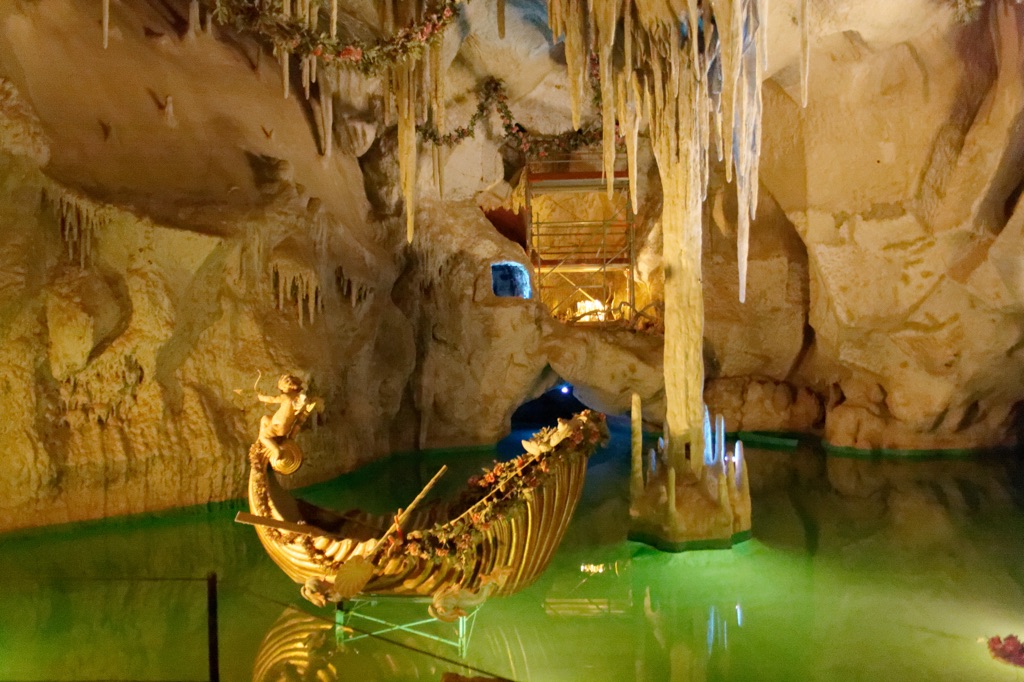The Venus Grotto at Linderhof Palace is a man-made cave and an extraordinary example of 19th-century romantic architecture. King Ludwig II of Bavaria commissioned this fantastical creation as part of his Linderhof Palace gardens. The grotto is an artificial cave that emulates the natural grottos found in the Karst landscapes. It was designed as a personal retreat for the king, inspired by Wagner’s opera “Tannhäuser,” and features a lake, a gilt boat shaped like a shell, and an artificial waterfall. The grotto’s unique lighting system, which originally used dynamo machines, could simulate different times of day and even weather conditions. Today, it stands as a testament to the king’s love for theatrical and romantic settings.
Get your dose of History via Email
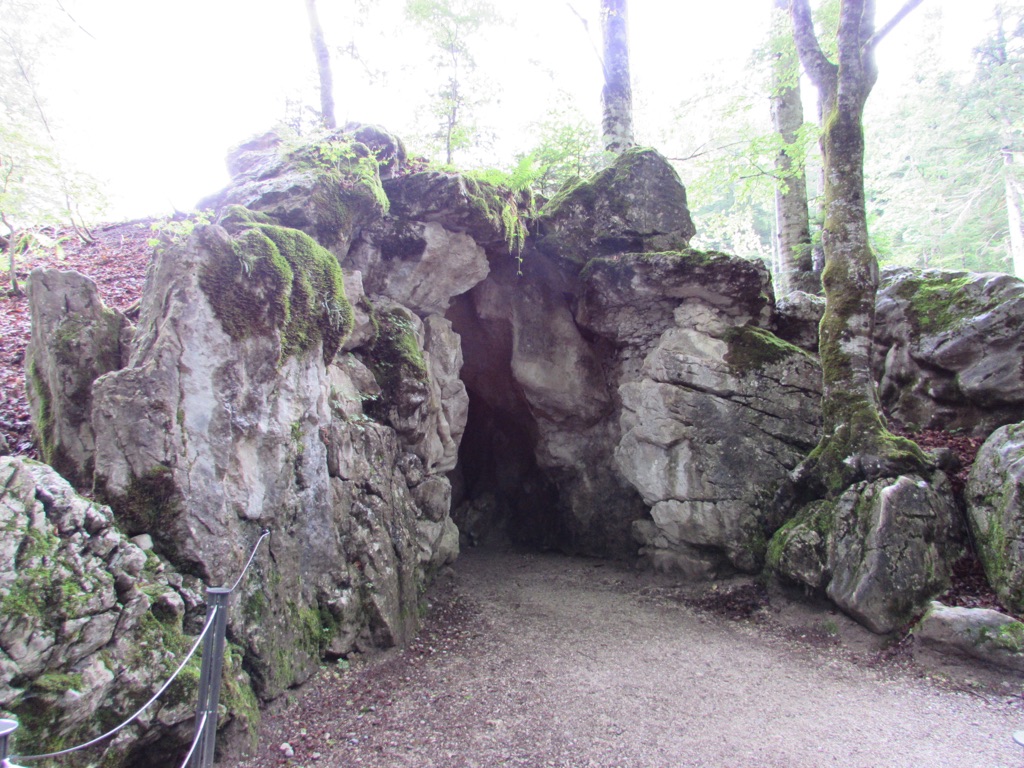
Historical Background of the Venus Grotto at Linderhof Palace
The Venus Grotto was built between 1876 and 1878 under the direction of King Ludwig II. The king was an ardent admirer of Richard Wagner’s operas and sought to bring the mythical world of Wagner’s works to life. The grotto was part of a larger project to transform the Linderhof estate into a fantasy world of opulence and romanticism.
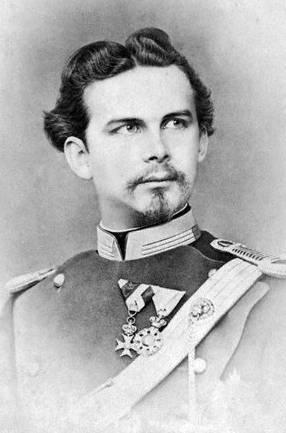
King Ludwig II himself never saw the completion of all his ambitious projects, but the Venus Grotto was one of the few that he did complete and enjoy. The grotto was a private sanctuary for the king, who often used it to isolate himself from the outside world. He would row in the shell-shaped boat and listen to Wagner’s music, surrounded by the artificial beauty of the grotto.
The grotto is significant as a symbol of Ludwig’s eccentricity and his passion for art and architecture. The grotto’s construction was a technical marvel of its time, featuring one of the first uses of electricity in Bavaria to light the cave in various colors.
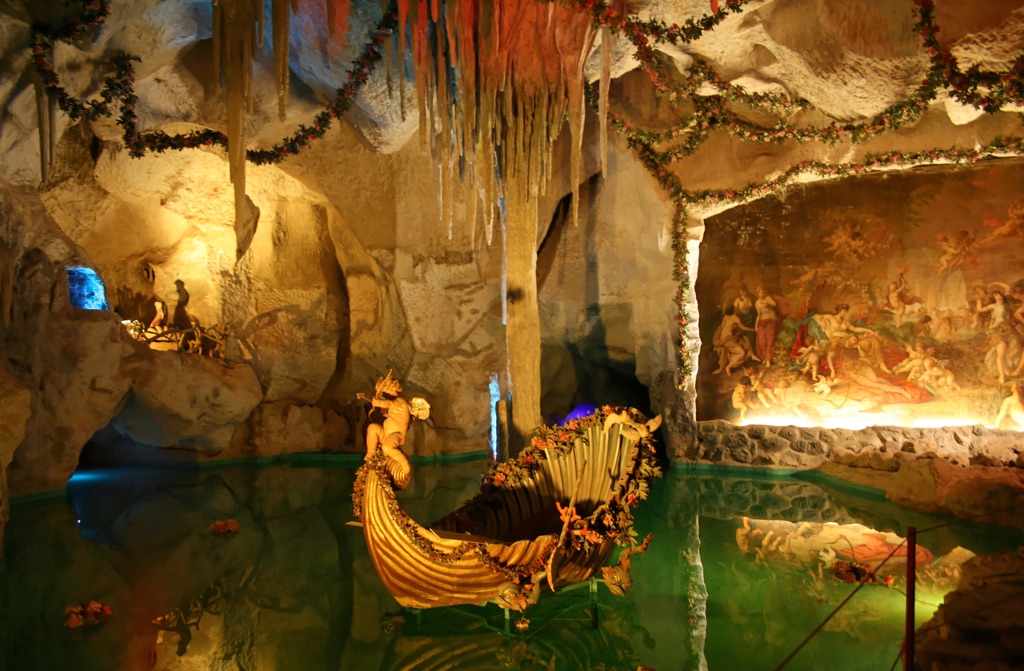
After Ludwig’s death, the grotto became a tourist attraction and has been preserved as part of the Linderhof Palace estate. It has undergone several restorations to maintain its structure and the technology that operates its lighting and water features. The grotto remains a popular site for visitors who are drawn to its unique blend of natural and artificial elements.
The Venus Grotto at Linderhof Palace is a testament to the king’s desire to escape reality and create his own world of fantasy. It stands as a lasting monument to Ludwig II’s vision and serves as a fascinating example of the lengths to which he went to realize his dreams.
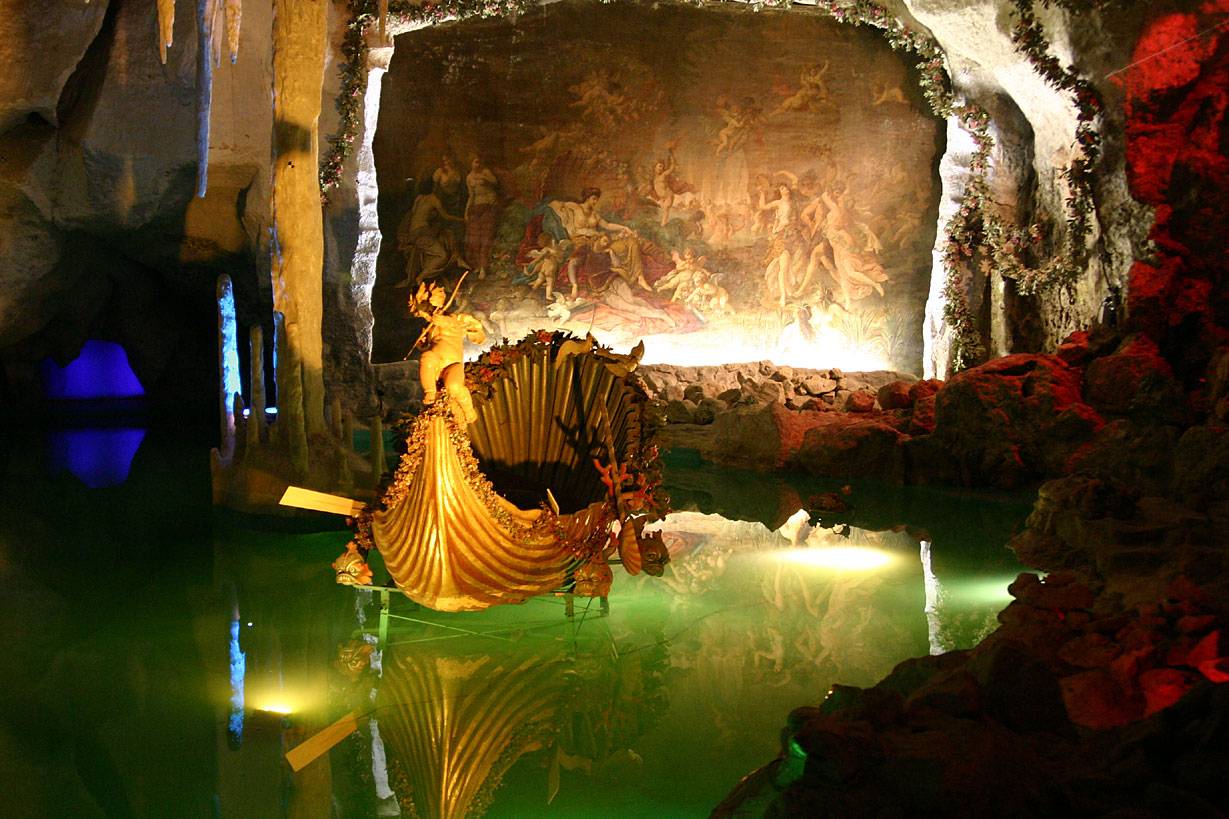
About the Venus Grotto at Linderhof Palace
The Venus Grotto is an artificial cave built into a hillside behind Linderhof Palace. The grotto’s interior is a large cavern with a lake, which was once heated and used for swimming. The walls are painted to mimic natural rock formations and are adorned with shells, sinter formations, and glass crystals to reflect the light.
The construction of the grotto was a complex undertaking. It required an innovative use of materials and technology, including one of the earliest uses of electricity for lighting. The lighting system was designed to change the grotto’s atmosphere, simulating different times of day and even moonlight.
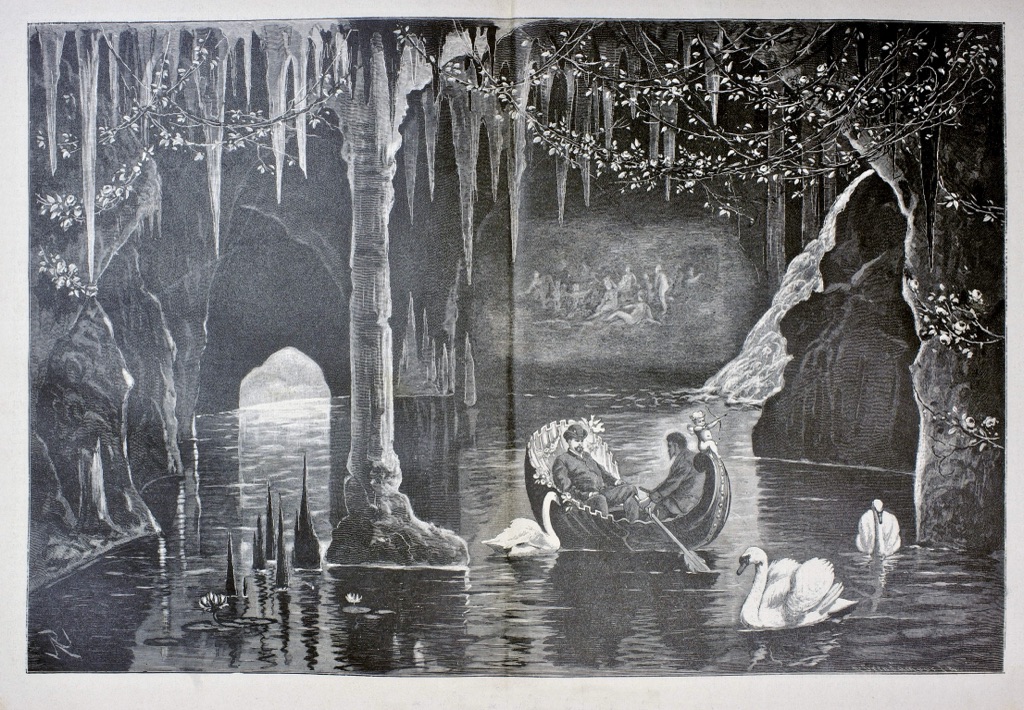
Architecturally, the grotto is a marvel. It features a stage area where musicians would perform Wagner’s music. The acoustics were carefully considered to enhance the musical performances. The grotto also includes a royal box where Ludwig would sit, akin to a private theater.
The materials used in the construction of the grotto were ahead of their time. Cement and iron were used to create the cave structure, while the lake was made watertight with a coating of lead and paint. The artificial waterfall added to the grotto’s romantic ambiance and was operated by a hydraulic system.
The Venus Grotto’s architectural highlights are its combination of advanced technology for the time and romantic design. It is a unique structure that blurs the line between nature and artifice, reflecting the king’s desire to live in a dream world inspired by myth and opera.
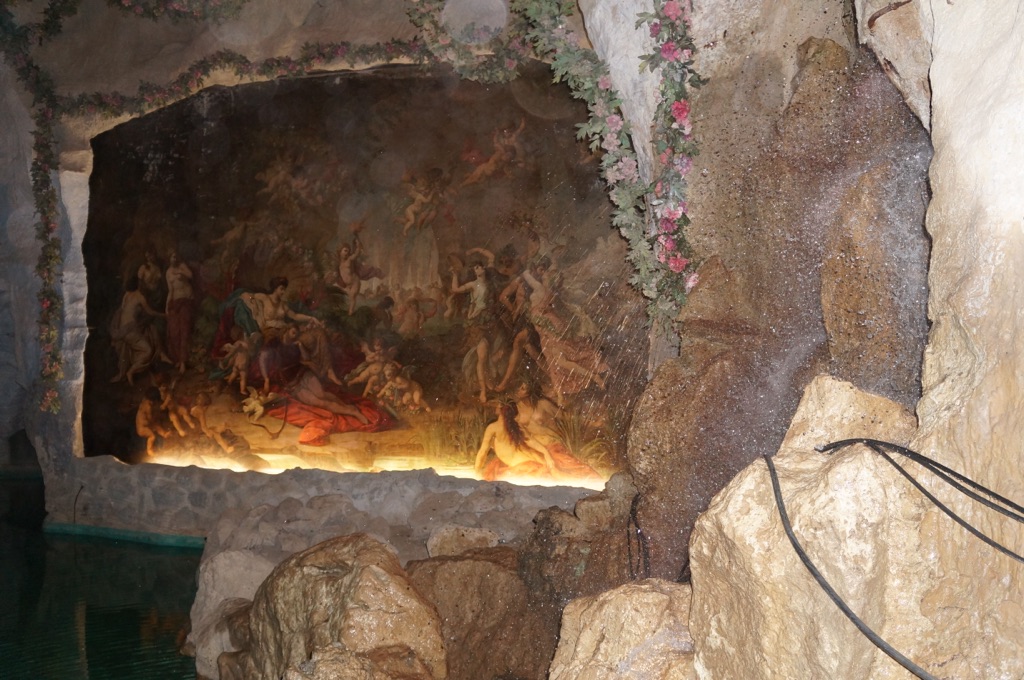
Theories and Interpretations
The Venus Grotto has been subject to various interpretations over the years. It is widely accepted that the grotto was a personal retreat for King Ludwig II, reflecting his love for Wagner’s operas and his desire for a private fantasy world.
Some theories suggest that the grotto was used for more than just relaxation and entertainment. It may have served as a secluded spot for the king to conduct private affairs away from the public eye. However, these theories are speculative and not supported by concrete evidence.
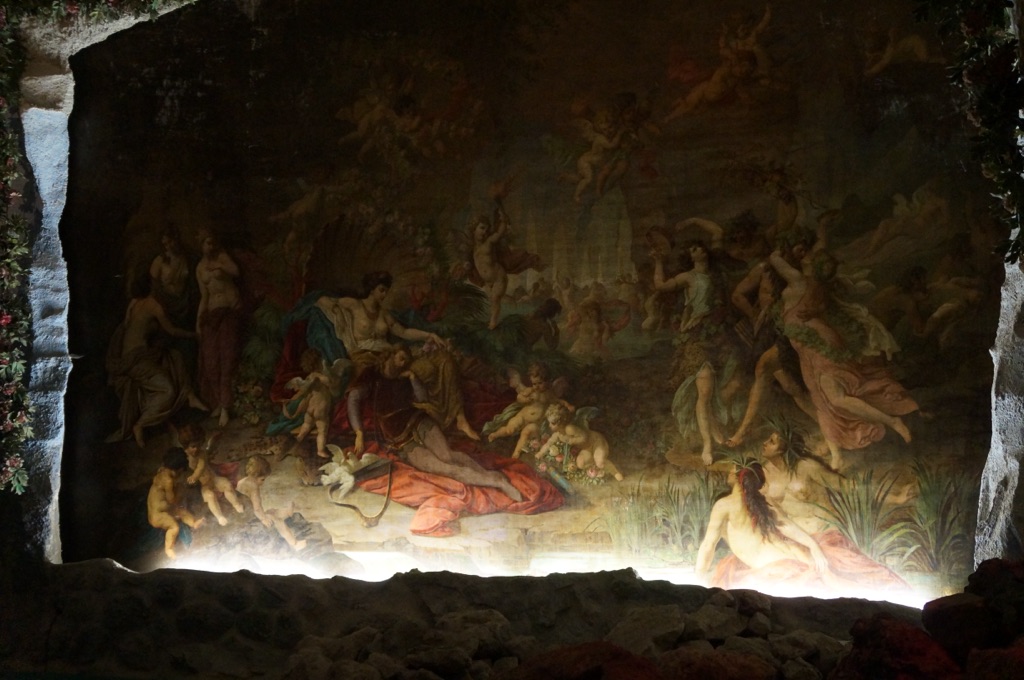
The original lighting system was so advanced that it has been studied by historians and engineers alike. The use of electricity was revolutionary for the time, and the grotto’s ability to simulate weather conditions was a feat of engineering.
Historical records and personal accounts from Ludwig’s time have been used to interpret the grotto’s purpose and design. The king’s letters and diaries provide insight into his thoughts and intentions regarding the grotto and his other architectural projects.
Dating the grotto’s construction has not been difficult, as the records from Ludwig’s reign are quite detailed. The construction period is well-documented, and the technological aspects have been preserved and studied, providing a clear picture of the grotto’s origins.
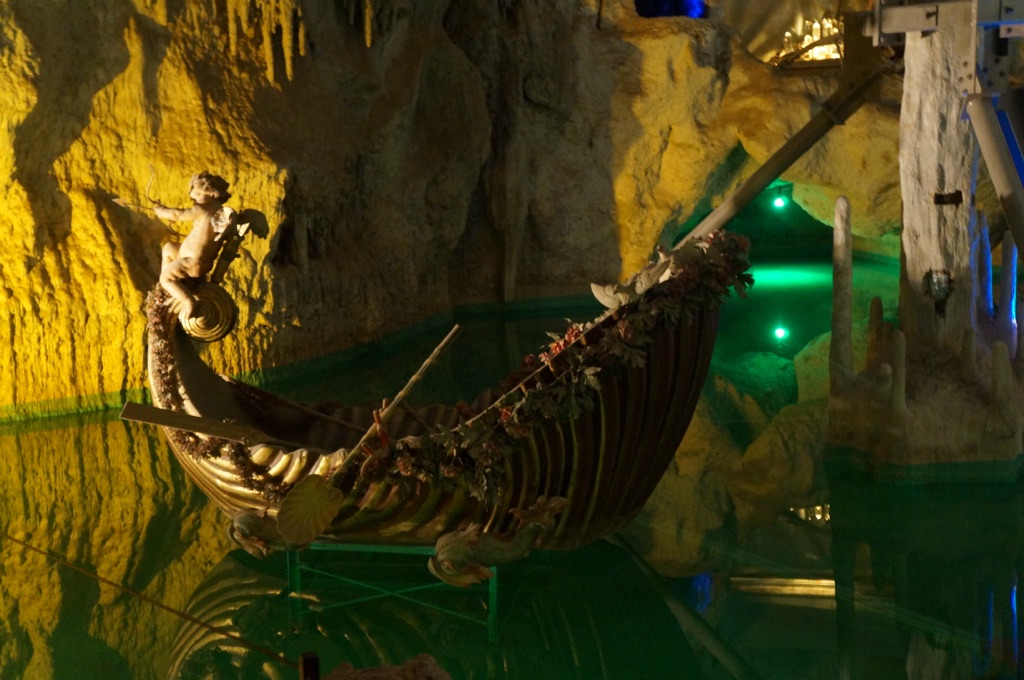
At a glance
Country: Germany
Civilization: Bavarian
Age: Built between 1876 and 1878 AD
Conclusion and Sources
Reputable sources used in creating this article include:
– Wikipedia: https://en.wikipedia.org/wiki/Linderhof_Palace
– Official website of Linderhof Palace: https://www.schlosslinderhof.de/englisch/palace/history.htm

